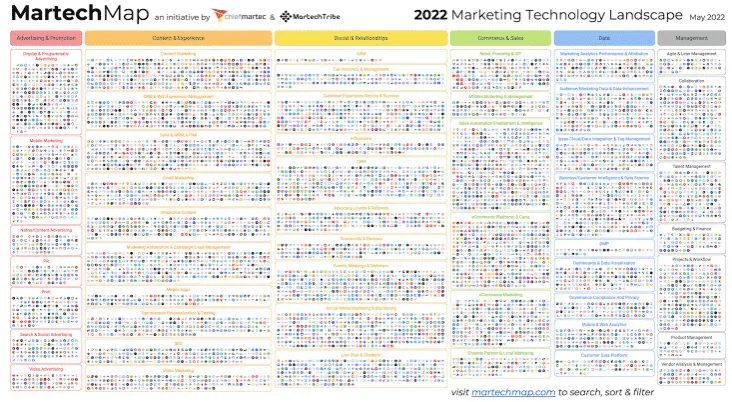
Software are constantly being developed to help marketers run their businesses. But, more software is not always the answer. Sometimes, it's just a distraction.
The other day, I was talking to a client who said they needed more software to manage their marketing.
I get it. If you're not using the right software for your business, it can feel like your hands are tied behind your back. It makes things harder than they should be and there's no simple way to fix it.
But here's the thing: more software is not going to solve your problems. You don't need another app—you need something that ties all of the tools you already have together in a way that makes sense for how you work.
There are plenty of reasons you might be tempted to add another piece of software to your marketing stack. Maybe you're trying to eliminate manual tasks like data entry or tracking keywords, or perhaps you're looking for an easier way to collaborate with other team members on projects. But before you start jumping into new software, let's look at why adding new tools won't always make life easier for your business.
Finding the right tools for the job is great, but if you aren't addressing the underlying problems, the software won't help.
Exploring software tools can be really fun. It's a chance to see new ways of doing things and imagine how they might help you. But we have to remember that technology is a tool, not the solution. The same thing is true with analytics. Analytics are an amazing way of understanding what's happening now, but they will never address why it's happening or what you should do about it in the future. That is up to people—people who understand the business behind their marketing and the challenges they are facing and the goals they want to achieve (and yes, there are many more than just growing revenue).
The human element must always be present for real solutions to emerge from analytics insights. Without it, analytics will only provide information: information about something that happened in the past; information about what happened when something else was done; but no insights into why things happen or how you can change them going forward.
Everyone is doing it.
Another software solution will not solve your problem. It's not going to work.
The essence of the problem you're trying to solve is this:
You feel like you should be doing more marketing because all your competitors are doing it, and they seem to get more business than you do.
You don't understand marketing technology, but you know that other people do — so maybe if you buy a bunch of new things and have some consultants come in and set them up for you, then finally, all your competitors will stop getting ahead of you!
It makes sense at the surface level, but when we start looking at the foundational problems with how most businesses approach software — issues which are magnified in marketing departments, who by nature tend to focus on tools rather than strategy — suddenly that idea starts looking like an expensive mistake.
You don’t know what marketing problems you have.
The first step to solving problems is understanding them. But, because of the current state of marketing, most marketers don’t understand their marketing problems.
You may think you know what your problem is - that you need to increase traffic or get more leads, for example - but you probably don't really know what your problem is until you try to solve it.
When I speak with companies about their marketing, they often tell me about a bunch of things they want me to do for them: “Get us more traffic! More leads! Build out our website! Help us with this campaign!” They have a laundry list of things they want to do, but very little clarity on why they want to do those things and how they will impact their business.
This lack of clarity makes sense – dealing with all the hype in the social media world can be overwhelming and paralyzing. In fact, many companies are victims of analysis paralysis – unable to move forward because there are so many options (and so much advice) available that they end up just spinning in place.
You need a way to tie everything together.
If you’re investing in software, it isn’t just because your business is thriving and you have money to spare. It’s because you recognize that technology can be a powerful tool for improving how you conduct day-to-day business. Even so, it isn’t going to fix everything all by itself. The most important thing is not what software you purchase—it’s how everything fits together. If your processes are still disjointed and haphazard, no amount of software will help tie them into a cohesive whole.
Your first priority should be making sure that all of the software and services that you have at your disposal are tied together as much as possible. If the marketing department uses one system for keeping track of clients but sales uses another, there’s bound to be some confusion about who does what when and where—not to mention the data discrepancies that will inevitably result from having two different systems in place!
If you're looking for a solution to your marketing problems, here's a hint: it's not more software.
It's not that we don't think software is useful—it indeed is! But if you're looking for the silver bullet that will solve all your problems, we're afraid you'll be disappointed.
The truth is this: there is no one-size-fits-all solution to any problem. If you want to find an effective marketing strategy, it's up to you to take the time to do the research and come up with a plan that works for your business and its needs.
In our experience, what really makes a difference in terms of results is having someone who thoroughly understands the unique challenges of your business (and can help navigate those challenges).






